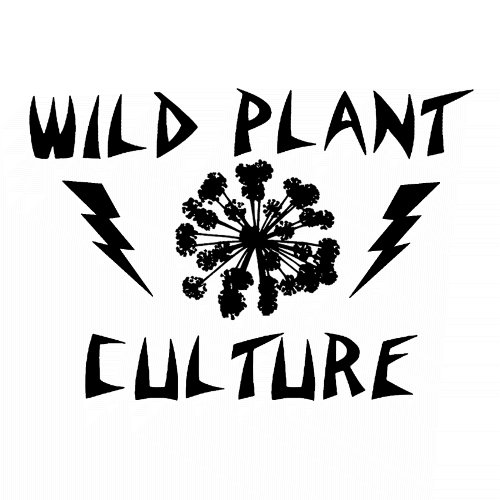Telling apart the blueberry-like shrubs

Much of the New Jersey Highlands is comprised of billion-or-so year old rock that weathers to produce nutrient-poor, acidic soils. Combined with excessive drainage on ridgelines and glacial till, these soils demand plants that are drought-tolerant, hold tight what few nutrients are available, and tolerate highly acidic conditions.
Cue the blueberry family, the Ericaceae.
These plants access nitrogen through mycorrhizal symbionts, and have very recalcitrant leaf litter that restricts nitrogen from becoming available to other species. They spread colonially, respond extremely favorably to forest fires, and are largely deer resistant. They're uniquely situated to dominate understories on largely acidic rock types such as granite and gneiss.
But how to tell them apart?
There are a bunch of shrubs in the blueberry family, a number of which produce blueberry-like fruit, a few that do not. They look superficially similar and telling them apart can be a challenge.
What follows are some tips for field identification of a limited group of the shrubs most likely to be confusing in the field. This is not a key and these are not necessarily the diagnostic features one will read about first in a manual. They're my shortcuts for field identification of various shrubby heaths I encounter doing botanical fieldwork in northern New Jersey and beyond.
To say it in botanese: we'll be looking at a few members of tribe Vaccinieae within subfamily Vaccinioideae within Ericaceae. Plus a member of the genus Lyonia which is in a different tribe.
The descriptions below all presume that one knows basically what a blueberry shrub looks like. Statements are comparative with this ur-blueberry or with whatever species one would most likely be choosing between. For example, black huckleberry is compared to blue huckleberry, or the two lowbush blueberries compared to one another.
I've avoided technical language, please forgive the resulting imprecision. Feedback and corrections are welcome.
First
Some of the first things I look at are:
· Twig color (green for lowbush and highbush blueberries, greyish black for black huckleberry)
· Height (short: lowbushes; short to medium: black huckleberry, deerberry; tallish: highbush, maleberry)
· Fruit (blossom end of the fruit is "open" in lowbush and highbush, closed in huckleberries, and the fruit is a distinctive, persistent dry capsule in maleberry).
· Fruit, again (if the fruit lacks any powdery blueish bloom on its surface it may be a black huckleberry. But... sometimes blueberries do this too. Including the best damn blueberry bush in the world, a black lowbush blueberry in Camden Hills State Park, Maine. Mmmmm....)
· Flowers: Mainly white closed-ish bells, but red in huckleberries, and an open flaring bell in deerberry
Species
Lowbush Blueberry (Vaccinium pallidum)
This is by far the most common lowbush blueberry in New Jersey, occurring in dryish oak woods with mapleleaf viburnum as well as in truly dry conditions on ridgelines. Also is the lowbush blueberry in the sands of the coastal plain.
-twig growth green (compare to Gaylussacia)
-leaf fairly broad relative to length. Egg-shaped.
-Fruits typically with a whitish bloom making them look blue
Lowbush Bluberry (Vaccinium angustifolium)
This species has a more northerly distribution and I mainly see it at high elevations with reasonable moisture in far northern NJ, north of Route 80. Uncommon! It is the farmed blueberry of Maine and other northern states.
-leaf narrow (2x as long as wide)
-Regularly toothed
-Twigs green
-Fruits typically with a whitish bloom making them look blue
Highbush Blueberry (Vaccinium corymbosum)
Mainly in wetlands but occasionally in uplands.
-Tall shrubs, 1 - 4 meters. Bigger fruits, leaves, and flowers than the lowbush blueberries.
-Fruits typically with a whitish bloom making them look blue (except in the Black Highbush Blueberry, Vaccinium atrococcum, which also has smaller flowers. I'm not going to go down the rabbit hole on highbush blueberry species/varieties right now and am not at all sure that if I did I would do a good job).
Deerberry (Vaccinium stamineum)
This is a bit of an outlier, a species that gets ignored. But it's pretty common in all the places that lowbush blueberry and black huckleberry grow. It's usually under a meter tall but can definitely develop more stature than lowbush blueberry. It also has a beautiful spreading aerial architecture.
Compared to lowbush blueberry:
-Flowers like flared bells instead of tubular bells, very pretty
-Flowers on twigs with reduced bracts between blooms
-Form very broad and spreading
-Twigs brownish
-Fruits are kinda big, greenish
-Fruit edible but not as sweet as blueberries, kinda gave me a stomachache one time when I gorged on them but maybe that was all in my head
Black Huckleberry (Gaylussacia baccata)
A lot of people lump the huckleberries with the blueberries, but these are well worth identifying and seeking out. The fruit is absolutely top notch, and the plants are beautiful.
-Undersides of leaves with greasy orange spots (glands). You need a loupe to see this, or some strong sunlight, sharp eyes, and experience.
-Mature twigs dark greyish blackish. Only this season's new growth is green. This is the easiest way to tell the plant from lowbush blueberry.
-Flowers are red!
-Fruits black, without protruding/open blossom ends, with bigger seeds than blueberries
Dangleberry/Blue Huckleberry (Gaylussacia frondosa)
This is a larger, more infrequent huckleberry species, usually found on wetland margins and moister conditions than black huckleberry.
Compared to black huckleberry:
-bigger leaves
-taller shrub
-Flowers on bracty sprays
-Fruits are in dangling clusters
Maleberry (Lyonia ligustrina)
This one’s an outlier, but looks a lot like a highbush blueberry. Look for it in wet habitats. Something about its color is distinctive but I haven’t seen it in awhile and can’t put my finger on it. Kind of a light brown. Look for the persistent sprays of seed capsules on mature plants for quick identification.
-Fruits are persistent capsules of dry seeds
-Fairly tall, usually in wet habitats



















